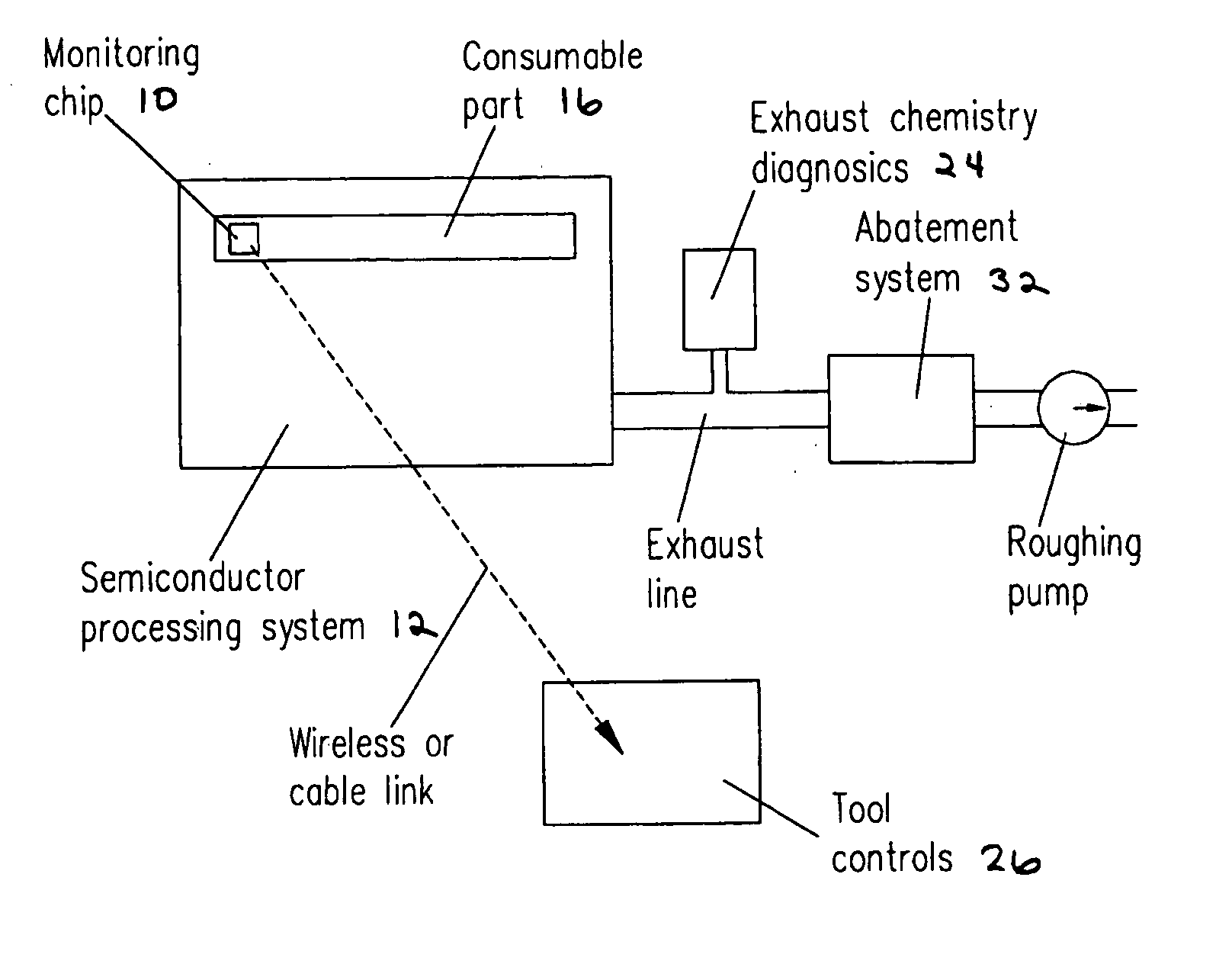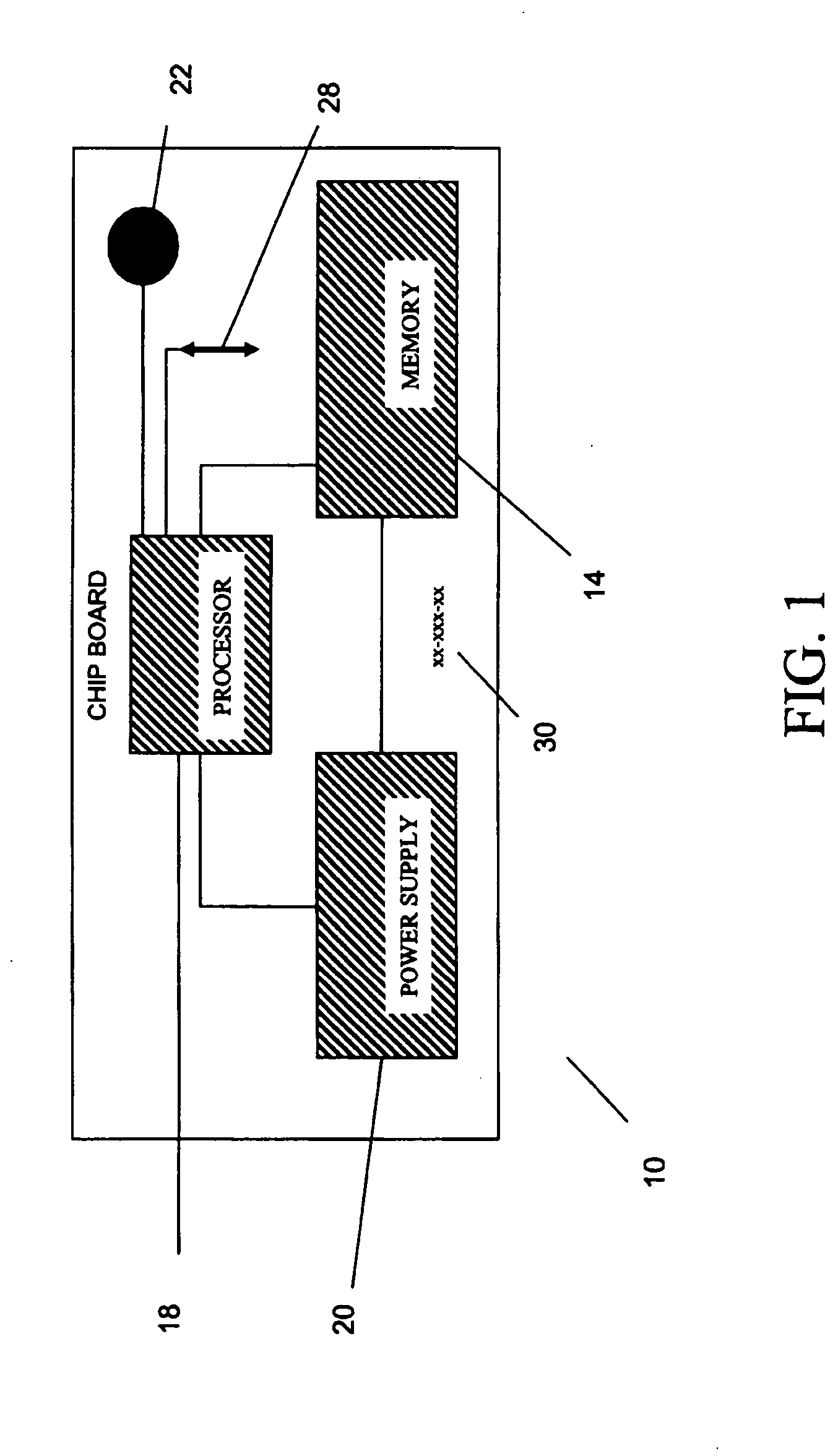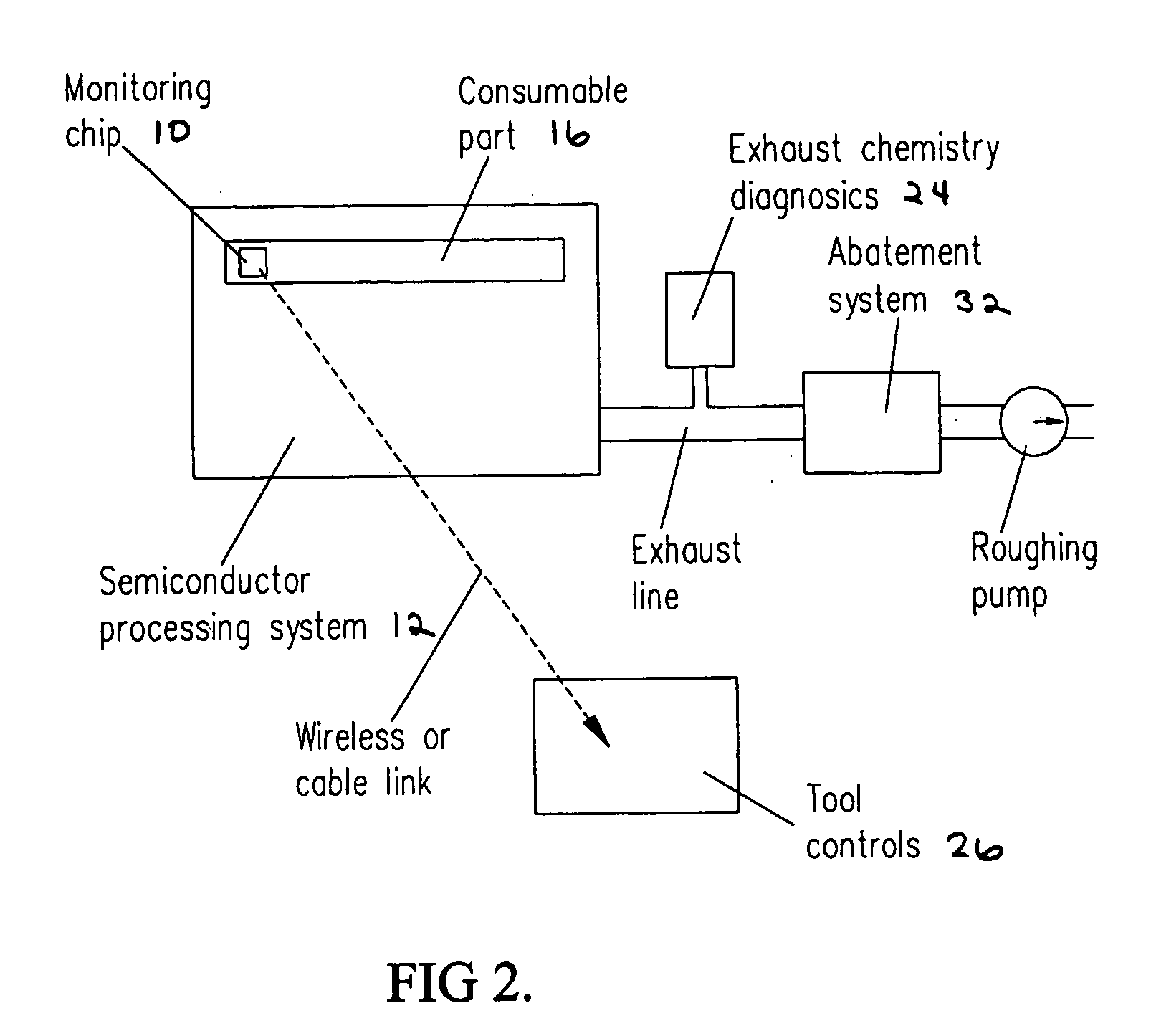Method and apparatus for determining chemistry of part's residual contamination
a residual contamination and chemistry technology, applied in semiconductor/solid-state device testing/measurement, data acquisition and logging, instruments, etc., can solve the problems of unusable metal contamination of semiconductor wafers being etched, parts are frequently exposed to toxic and dangerous chemistries, and cover can etch or otherwise become unusabl
- Summary
- Abstract
- Description
- Claims
- Application Information
AI Technical Summary
Benefits of technology
Problems solved by technology
Method used
Image
Examples
Embodiment Construction
[0021] Referring now to the drawings, FIG. 1 depicts a schematic view of an electronic monitoring device 10 in accordance with one embodiment of the present invention utilized in a semiconductor processing system 12.
[0022] The electronic monitoring device 10 includes a memory 14 dedicated to the consumable part 16 (shown in FIG. 2), which stores a history of chemical exposures of the consumable part 16. The electronic monitoring device 10 includes an electronic monitoring device processor 18 connected to the memory 14, and includes a power supply circuit 20 for providing power to the memory 14 and the processor 18. The memory 14 of the electronic monitoring device 10 is preferably a nonvolatile memory, such as FLASH memory. The power supply circuit 20 can include a power source such as a battery (not shown). The electronic monitoring device 10 can include a gas sensor 22. The processor 18 can transfer data to and from the tool controls 26 (shown in FIG. 2) via a wireless communicat...
PUM
 Login to View More
Login to View More Abstract
Description
Claims
Application Information
 Login to View More
Login to View More - R&D
- Intellectual Property
- Life Sciences
- Materials
- Tech Scout
- Unparalleled Data Quality
- Higher Quality Content
- 60% Fewer Hallucinations
Browse by: Latest US Patents, China's latest patents, Technical Efficacy Thesaurus, Application Domain, Technology Topic, Popular Technical Reports.
© 2025 PatSnap. All rights reserved.Legal|Privacy policy|Modern Slavery Act Transparency Statement|Sitemap|About US| Contact US: help@patsnap.com



